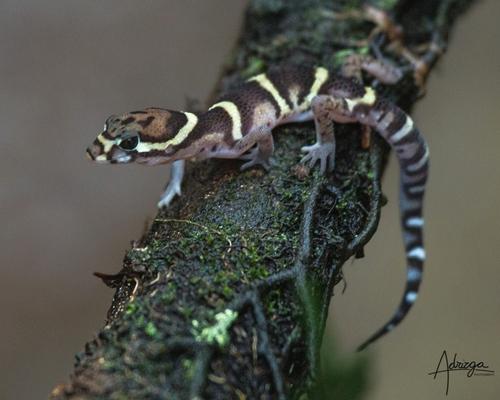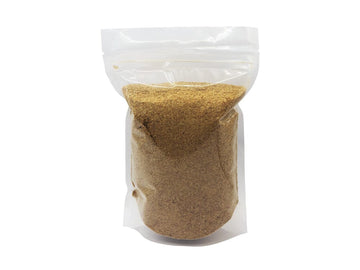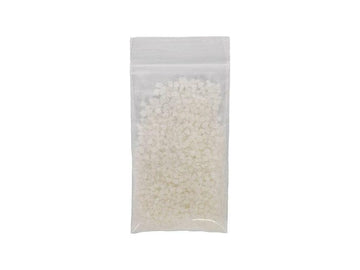The Central American banded gecko (Coleonyx mitratus) is a 5-7” long, nocturnal, terrestrial lizard native to Central America. They can be found in areas of tropical and subtropical forest, often near rock piles or areas of rocky terrain.
Central American banded geckos are slender lizards with a tapered head, large eyes, slender limbs, long toes, bumpy skin, and an unsegmented tail. Unlike most other geckos, they have eyelids, and they do not have sticky feet. Their pattern is typically brown with cream/yellow bands, dark markings, and a pale belly.
Central American banded geckos have a low tolerance for handling and have particular humidity needs, making them intermediate-level pet reptiles. With good care, they may have a 15+ year lifespan.
This care sheet can also be applied to caring for C. elegans.
Minimum terrarium size for Central American banded geckos
The minimum terrarium size for a Central American banded gecko is 30”L x 12”W x 12”H, or a 20 gallon “long” tank. Of course, larger is always better — if you provide, they will use it! This is especially the case if you want to house multiple geckos.
Housing multiple banded geckos in the same terrarium is not required, but it is possible to do, as they seem to get along in groups. A 20 gallon enclosure can house up to 3 geckos. Never house males together, as they will fight. Males and females should only be housed together if you intend to breed them.
Do Central American banded geckos need UVB?
Technically they can survive without it, but they are healthier when it is provided. UVB lighting helps provide a clear day/night cycle, provides all of the vitamin D that your gecko needs, strengthens the immune system, facilitates better digestion, and other benefits.
The best UVB bulbs for banded geckos are:
- Zoo Med Compact Coil Reptisun 5.0, 26w
- Zoo Med T8 Reptisun 5.0, 18”
For best results, house the UVB bulb in a reflective fixture. The bulb should be roughly half the length of the enclosure. Compact coil bulbs should be mounted horizontally, not vertically, for best results.
UVB is blocked by glass and plastic, so placing the terrarium in front of a window isn’t “free UVB” — in fact it can make your terrarium too hot due to the greenhouse effect. Don’t forget to replace your bulb every 12 months!
Lights should be on for 12 hours/day.
Best temperature for Central American banded geckos
Central American banded geckos should have a warm hide temperature of 86°F, cool side temperature around 77°F, and nighttime temps between 64-68°F. Heat sources should be turned off at night. Place a digital probe thermometer on the cool side of the enclosure to make sure it never gets too warm.
It’s best to provide heat for your gecko with a combination of a heat mat and low-wattage heat bulb:
Heat bulbs (especially halogens) are better at imitating sunlight, and considered to be a superior form of reptile heating by experts. This is for creating a toasty warm hide and functional temperature gradient. The heat lamp should be placed on one side of the enclosure, with the warm hide directly below. Do not use ceramic heat emitters (CHEs), red bulbs, or blue bulbs, as these are not as effective. If the heat lamp is too warm, dim it with a plug-in lamp dimmer. If too cool, you need a higher-wattage bulb.
The heat mat is for keeping the cool side at the right temperature, and should be plugged into a thermostat with the probe placed inside the cool hide. The mat itself should be roughly the same size as the enclosure’s footprint.
Best humidity levels for Central American banded geckos
Central American banded geckos do best in an environment with 60-70% average humidity, as measured by a digital probe hygrometer with the probe in the middle of the terrarium. Tp maintain humidity, spray down the enclosure with water nightly and mix water into the substrate as needed to remoisten.
However, it’s also beneficial to provide a humid hideout lined with moist substrate to give them a place to go when they need more moisture, such as when they’re shedding.
Best substrate for Central American banded geckos
“Loose” substrates that mimic a reptile’s natural environment present a low impaction risk, cushion the animal’s joints, and offer a place where they can exercise natural burrowing behaviors.
We recommend the following substrates for Central American banded geckos:
- Zoo Med ReptiSoil
- Zoo Med Eco Earth
- Eco Terra Plantation Soil
- Zilla Jungle Mix
Layering clean, chemical-free leaf litter on top of the substrate can also help with humidity.
Substrate should be at least 2” deep and completely replaced every 3-4 months. Remove poop and urates daily, along with contaminated substrate.
How to decorate a Central American banded gecko terrarium
An empty terrarium leads to a bored and/or stressed gecko. Keep your pet entertained and engaged with its environment with the strategic use of décor items that encourage it to exercise natural behaviors.
At bare minimum, you will need at least two hides/caves for the gecko to use. However, it’s best to include other items, such as:
- leaf litter
- small logs and branches
- climbing rocks
- ledges
- additional hides
- live or artificial plants
For best results, cover three sides of the enclosure to help your pet feel more secure in its home.
What to feed to a Central American banded gecko
Banded geckos are insectivores, which means that they need to eat a variety of insects to get the right nutrition. Juvenile banded geckos should be fed every day, and adults should be fed every other day.
Offer 2 insects per 1 inch of your gecko’s length, or however much they will eat in 15 minutes. Insects should be no wider than the space between the gecko’s eyes.
Feeder insects for banded geckos: dubia roaches, discoid roaches, crickets, black soldier fly larvae, hornworms, mealworms, mealworm beetles
Supplements
You will also need calcium and vitamin supplements to help keep your gecko healthy. We recommend Repashy Calcium Plus LoD, lightly dusted on all of your gecko’s feeder insects. It’s okay to occasionally skip a dusting.
Water
Of course, don’t forget a small water bowl for your gecko to drink from! Change the water daily and scrub the bowl with a reptile-safe disinfectant weekly, or whenever it becomes soiled.
How to handle your Central American banded gecko
Reptiles generally don’t appreciate petting and handling in the same way that dogs and cats do. Banded geckos are small and fragile, and handling can be very stressful for them, so it’s best to keep the handling to a minimum. Instead, try interacting with your pet via hand-feeding with soft-tipped tongs.
*This care sheet contains only very basic information. Although it’s a good introduction, please further your research with high-quality sources. The more you know, the better you will be able to care for your pet!
“Photo 141385488” by adrizga is licensed under CC BY-NC 4.0











